The Qualcomm Snapdragon 820 Performance Preview: Meet Kryo
by Ryan Smith & Andrei Frumusanu on December 10, 2015 11:00 AM EST- Posted in
- SoCs
- Snapdragon
- Qualcomm
- Snapdragon 820
CPU Performance, Cont
Having taken a look at Snapdragon 820 and the Kryo CPU from an architectural perspective, let’s look at our higher level benchmarks. We’ll start as always with the web benchmarks.

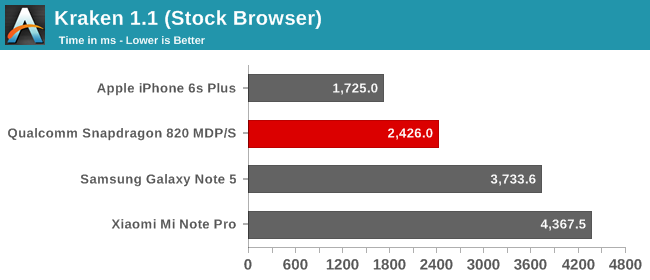
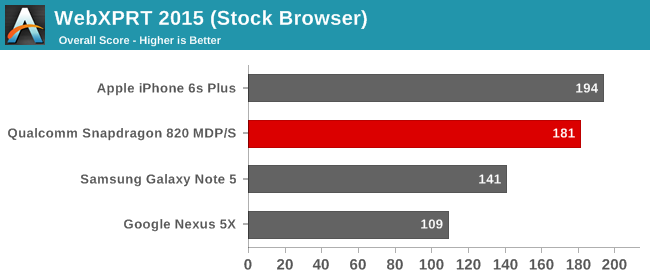
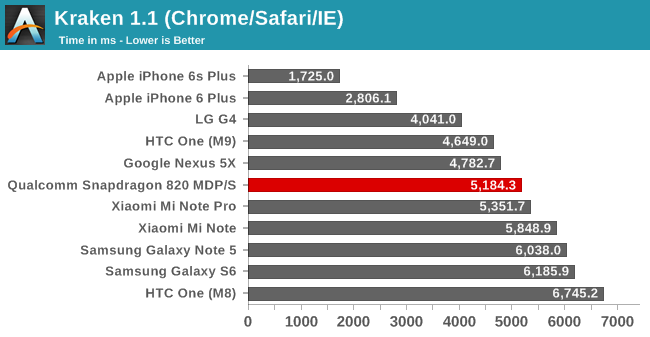

There are two things we can immediately take away from these results. The first is that currently Google Chrome is incredibly unoptimized for Kryo, and this is something Qualcomm was also quick to mention. We won’t wax on about this as there’s nothing to say we haven’t said before, but Chrome could certainly stand to implement optimized JS engines sooner.
Otherwise if we look at Qualcomm’s native browser, things are greatly improved. Relative to both the Exynos 7420 (A57) powered Note 5 and the Snapdragon 810 (A57) powered Mi Note Pro, the MDP/S shows a significant lead. In fact it pretty much blows past those devices in Kraken. However while it easily takes the top spot for an Android device, even with Qualcomm’s native browser the 820 isn’t going to be able to catch up to the iPhone 6s Plus and its A9 SoC.

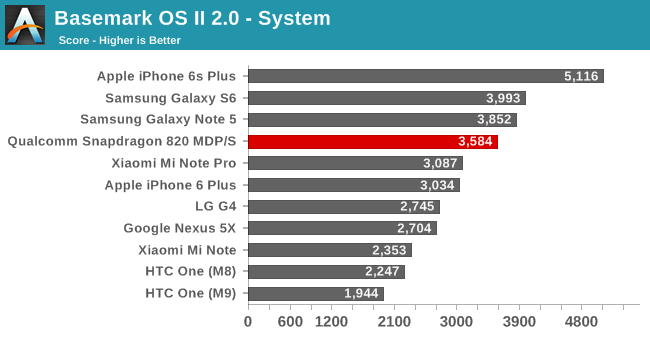
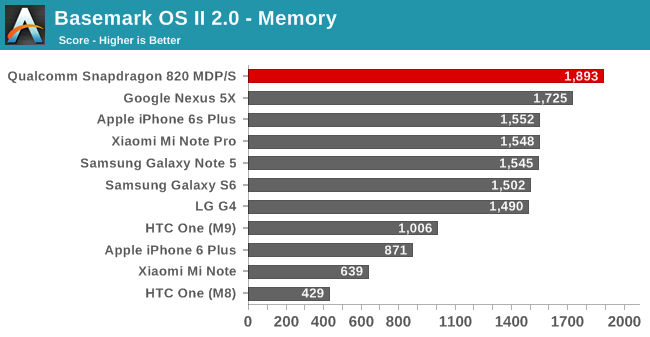
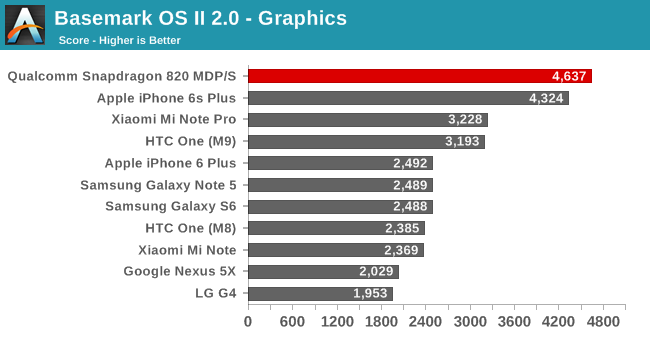
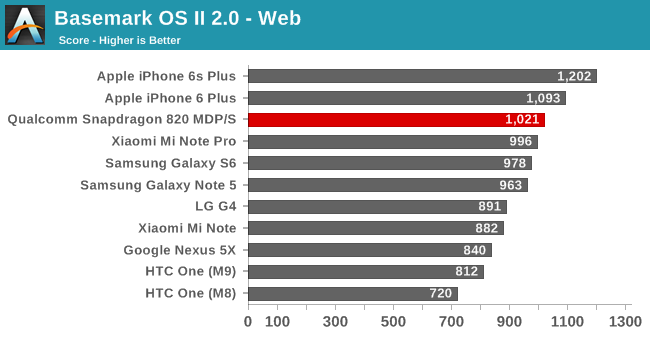
Basemark OS II 2.0 on the other hand is less consistent. The overall score again pegs the MDP/S as the best Android device, and by over 20%. However for reasons yet to be determined, the system score is still below the latest Samsung devices. Instead where the 820 shows a clear lead is with the storage (memory) score and the graphics score. In some cases it’s even beating the iPhone 6s Plus, though overall it will fall short.

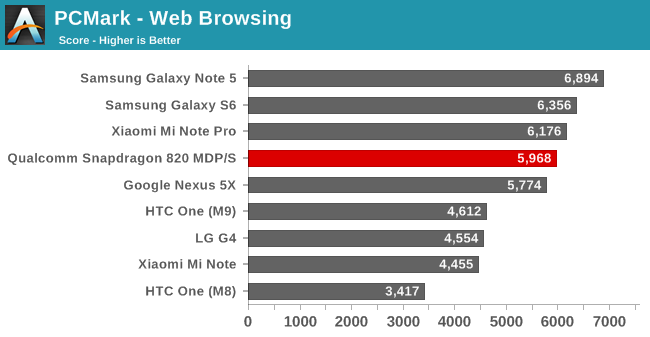
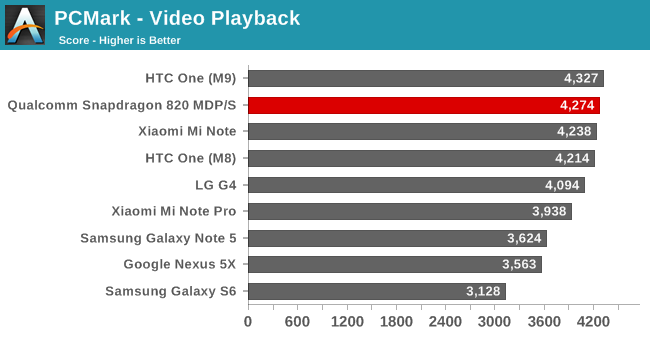
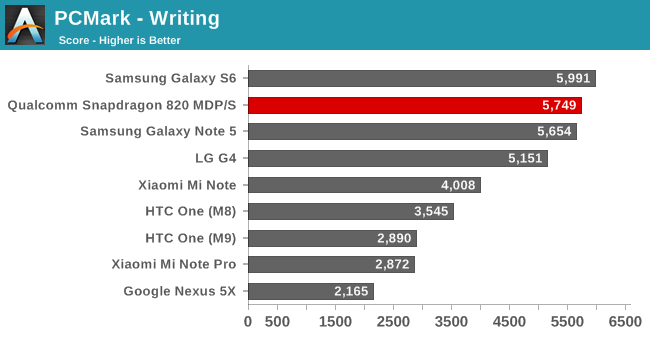
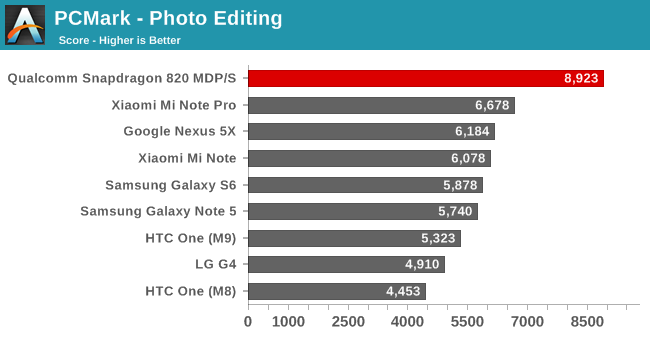
Our final system benchmark, PCMark, once again puts the MDP/S in a good light overall, while the individual sub-tests are more widely varied. Likely owing to the same optimization issues that dogged Chrome performance, web browsing performance trails the A57 devices. Meanwhile video playback closely trails the Snapdragon 810 powered HTC One M9, and writing performance won’t quite surpass the Galaxy S6. Where the 820 MDP/S makes up for it is in the photo editing score, which is through the roof. Here Qualcomm’s development device holds a 34% performance lead over the next-fastest device, the 810/A57 based Mi Note Pro.










146 Comments
View All Comments
lucam - Friday, December 11, 2015 - link
So if the chip is not heating up it's not a problem, we need to wait if the phone heating up too...very weird point of view..Impulses - Friday, December 11, 2015 - link
Your backwards interpretation of what he said is the only weird thing.ganz - Friday, December 11, 2015 - link
Thanks @tipoo and @jjj. It's just that I see people posting stuff like, "The device get [sic] unnaturally hot." I parse this complaint to mean, "Ow, my hand!", not, "Dang, why so slow?"I think yours is the valid complaint, but what I keep reading are comments like @Krysto's here. And I still think @Krysto and others are actually complaining about the device becoming uncomfortable to hold.
My meaning is this: "Quantify your complaint, @Krysto" If it's *really* the heat (really?), how hot is too hot? If it's the performance, maybe say so.
extide - Thursday, December 10, 2015 - link
Supporting the SHA1 instructions is part of being ARMv 8 compliant -- it's not really their choice...lilmoe - Thursday, December 10, 2015 - link
On the first chart, the memory controller stack of the 820 should be 64bit dual channel.tipoo - Thursday, December 10, 2015 - link
Mixed feels. A move away from the frankly bad Cortex A57 cores, cool. But you could pretty well tell from the very first page that this was set to punch below A9, coudn't you? Longer latencies on float, int, 1/3rd the L2, no L3 at all. And particularly as a big.LITTLE design that means less sharing between high power/low power core clusters.And unlike S810, there's 2, not 4, "big" cores to at least make up for the lackluster IPC 810 had compared to A9.
Just think their aim wasn't high enough...Again...
r3loaded - Thursday, December 10, 2015 - link
Oi, don't slate the A57! Those cores run beautifully in Samsung's Exynos 7 without overheating or throttling, and performance of that SoC is broadly comparable to the A8.Integration and implementation are just as important as the initial selection of IP blocks for an SoC.
tuxRoller - Thursday, December 10, 2015 - link
You're forgetting that Samsung had a rather significant process advantage. Take that away, and they'd need to lower their clocks to sd808 levels, is imagine.Andrei Frumusanu - Thursday, December 10, 2015 - link
The Exynos 5433 runs quite better than the Snapdragon 808.tuxRoller - Thursday, December 10, 2015 - link
According to wikipedia it's clocked at 1.9ghz, which is right around the snapdragon 808.